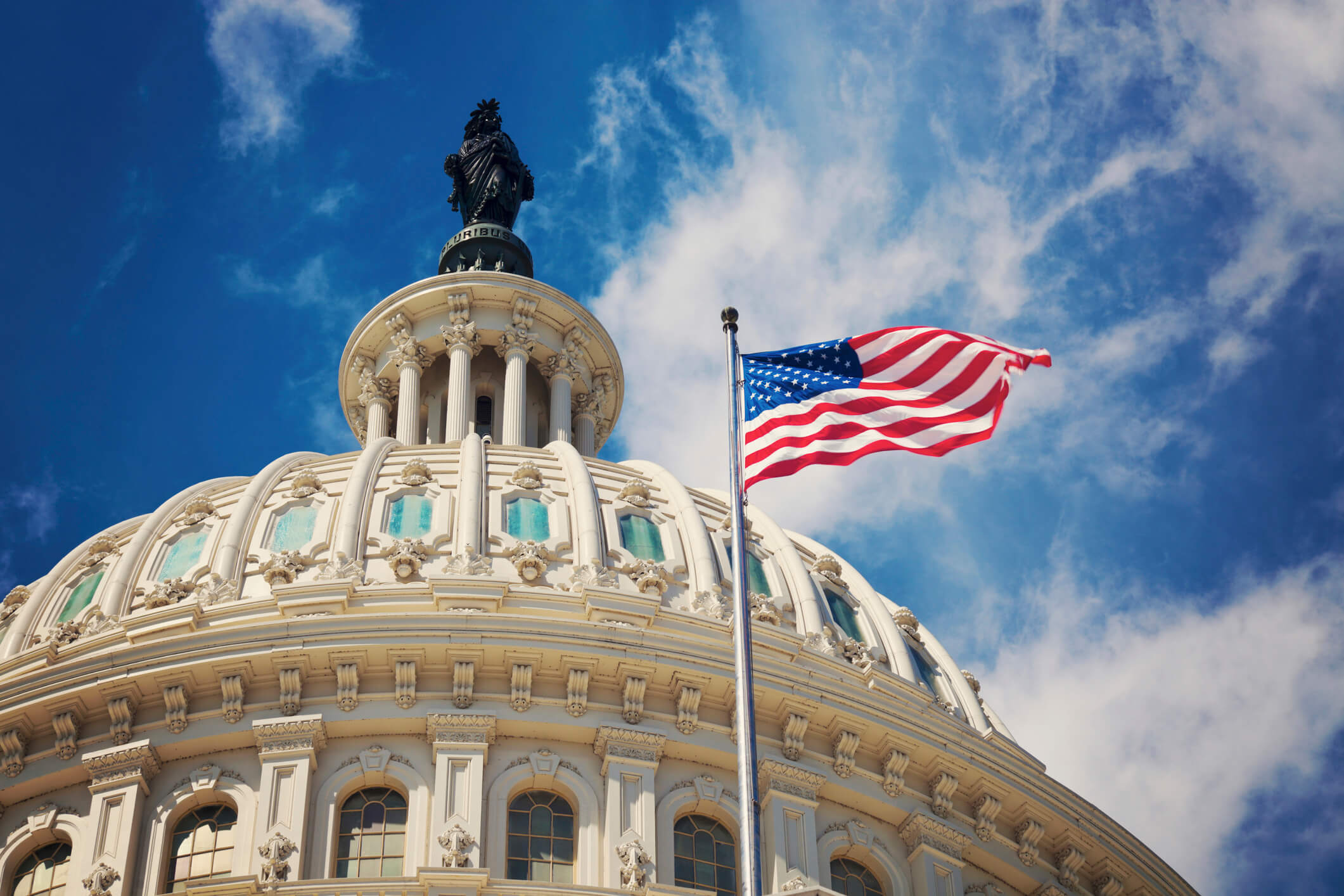Narrowly averting a federal government shutdown, on December 13 in a rare Saturday evening session the Senate passed the massive 1600 page, $1.1 trillion FY2015 Omnibus Appropriations bill that will fund government operations through September 2015. On Thursday, December 11, the House narrowly passed the omnibus spending bill over strenuous opposition from both liberals and conservatives. The House then passed a two-day stopgap funding bill that gave the Senate only until 11:59 p.m. on Saturday night to approve the massive omnibus funding bill. President Obama is poised to sign it.
H.R. 83, the Consolidated and Further Continuing Appropriations Act, 2015 funds all federal departments and agencies except the Department of Homeland Security (DHS), which will be funded through a Continuing Resolution (CR) on a temporary basis (expected to be valid through February 27, 2015). The temporary CR will still allow Congress to negotiate a full DHS appropriations bill, presumably with some language addressing President Obama’s recent executive action on immigration.
The FY 2015 Omnibus Appropriations bill has been described as a “cromnibus” bill because it includes both types of funding legislation: (1) a Continuing Resolution (CR), which is generally a clean statement of funding at the current levels for each department or agency with no adjustments, restrictions, or other explanations; and (2) an omnibus appropriations bill that includes commentary and possible policy “riders” directing the agencies as to the use of funding to develop or enforce particular regulations.
The FY 2015 Omnibus Appropriations bill reflects the fact it was developed in a divided Congress: the result is not everything everyone wanted. However, it contains some positive riders and rejects several damaging riders. For labor and employment agencies, the highlights now follow.
-
The National Labor Relations Board
Despite a requested increase of $3 million in its funding level, the FY 2015 budget for the National Labor Relations Board (NLRB) remains the same as FY 2014: approximately $274 million.
An appropriations rider prohibits the use of “any new administrative directive or regulation” with respect to electronic voting in representation elections conducted by the Board.
While there are many other potential riders seeking to stem the tide of overly aggressive NLRB actions, such as the “ambush election” rules and a potential new “joint employer” standard, those will be the subject of congressional oversight hearings, legislation, litigation, and possible appropriations riders in 2015.
-
The Equal Employment Opportunity Commission
The Omnibus Appropriations bill increases the Equal Employment Opportunity Commission’s (EEOC) budget by $500,000 from FY 2014, but falls $1 million short of the EEOC’s request of approximately $365.5 million.
The accompanying report language directs the EEOC to engage in conciliation efforts before undertaking litigation, and to report—no later than 90 days after enactment of this Act—on how it ensures that conciliation efforts are pursued in good faith.
-
The U.S. Department of Labor: FLSA
Government Contractor “Blacklisting” Riders Removed
Riders were removed from four House-passed appropriations bills (Transportation-Housing and Development, Department of Defense, Energy and Water, and Financial Services) that would have prohibited any funds appropriated under the bills from being used to enter into a contract with any company that had violated the Fair Labor Standards Act (FLSA) within the previous five years, or entered into any settlement with an acknowledgement of an FLSA violation in a civil, criminal, or administrative proceeding.
Wage and Hour Division
The administration’s requested budget increase of more than $38 million to expand FLSA enforcement was slashed and resulted in only a $3.2 million increase. Report language also directs the Wage and Hour Division (WHD) to submit a report to the House and Senate Committees on Appropriations within 180 days of enactment of the FY 2015 Omnibus Appropriations bill that will detail the steps taken by WHD to improve the process for wage determinations for public works projects and correct the deficiencies cited in the 2004 Inspector General’s report titled “Concerns Persist with the Integrity of Davis-Bacon Act Prevailing Wage Determinations.”
-
The U.S. Department of Labor: Employee Benefits Security Administration (EBSA)—Pension and Retirement
The Multiemployer Pension Plan Amendment
House Education and the Workforce Committee Chairman John Kline and Ranking Member George Miller introduced an amendment to the Omnibus Appropriations bill that would provide comprehensive multiemployer pension reform. The Kline-Miller Amendment will give plan trustees the option to cut vested benefits in order to save plans that are headed toward insolvency and will increase plan premiums to the financially-troubled Pension Benefit Guaranty Corporation (PBGC). The agency’s multiemployer pension program is projected to become insolvent within the next 10 years.
The amendment does not mandate cuts, but instead gives trustees the option to cut benefits if a cut will prevent the plan from becoming insolvent. At the moment, under the Employee Retirement Income Security Act (ERISA) of 1974, trustees cannot cut benefits that have already been earned.
The National Coordinating Committee for Multiemployer Plans’s proposal, “Solutions Not Bailouts,” was the basis for the Kline-Miller Amendment. In the weeks leading up to the amendment, the AARP, the Pension Rights Center, and some unions, including the Teamsters and the International Association of Machinists and Aerospace Workers, objected to the negotiations.
The Kline-Miller Amendment makes permanent the multiemployer provisions under the Pension Protection Act of 2006, which had been scheduled to sunset at the end of 2014. In addition, it addresses the authority of the PBGC to facilitate plan mergers, allows plan sponsors to apply to the PBGC to partition a plan, and increases the PBGC premium for multiemployer plans to $26 per person (with future increases based on the wage index). It also allows for benefit suspensions in certain plans in critical status. In addition, the Kline-Miller Amendment includes a provision that redefines a cessation of operations under ERISA section 4062(e). This change in definition is meant to decrease the number of plan sponsors impacted by ERISA section 4062(e). The Omnibus Appropriations bill also prohibits the use of funds for the PBGC to take any action under ERISA section 4062(e).
Unfortunately, while the Kline-Miller amendment is designed to reduce multiemployer pension plan insolvencies for underfunded plans, it does not reduce the staggering legacy withdrawal liability that, in some cases, exceeds a company’s entire net worth. The Omnibus bill also dropped a rider that would have prohibited EBSA from moving forward with new regulations on the definition of “fiduciary.”
The Kline-Miller amendment is a response to the fear that employers would rush to leave plans next year if nothing were done. Chairman Kline was quoted as saying at a House Rules Committee meeting on the amendment, “We cannot let this opportunity pass by hoping we will get a better deal in the future. By acting now we can deliver retirees greater protections that might not be available down the road.”
-
The U.S. Department of Labor: OSHA
The Occupational Safety and Health Administration’s (OSHA) funding level increased by a mere $540,000 (to almost $553 million) despite a requested increase of $12.8 million. The final amount reflects smaller-than-requested increases in enforcement ($215,000) and whistleblower enforcement ($500,000), but a decrease in compliance assistance ($1.15 million).
Report language directs OSHA to notify the House and Senate Committees on Appropriations 10 days prior to the announcement of any new National, Regional, or Local Emphasis Program, including the need for the launch of the new Program; it also urges OSHA to consider all currently available technology as it develops any new standard for workers’ exposure to silica dust.
-
The U.S. Department of Labor: OFCCP
The U.S. Department of Labor’s Office of Federal Contract Compliance Programs (OFCCP), which is responsible for enforcement of federal contractors’ compliance with affirmative action rules, received a $1.5 million increase from FY 2014—one-half of its requested increase of $3 million.
-
The U.S. Department of Transportation: FMCSA’s Hours of Service Regulation
The FY2015 Omnibus Appropriations bill also contains language governing the expenditure of funds by the U.S. Department of Transportation’s Federal Motor Carrier Safety Administration (FMCSA) that would suspend two key parts of FMCSA’s much-lobbied’s Hours of Service (HOS) rule on when and how long truckers must rest. It would effectively increase (from 70 to 82 hours) the number of hours a trucker may drive each week. Instead, the Omnibus Appropriations bill requires the Department of Transportation to undertake a study on the HOS rule and its effects. Supporters of the change argue that it will improve safety and mean fewer trucks on the road during busy rush hours.








